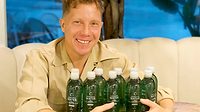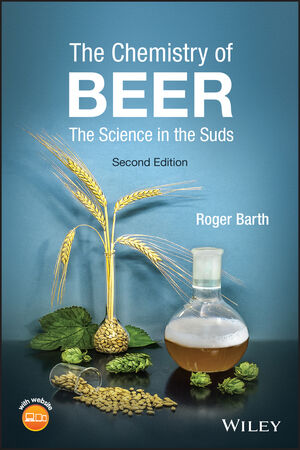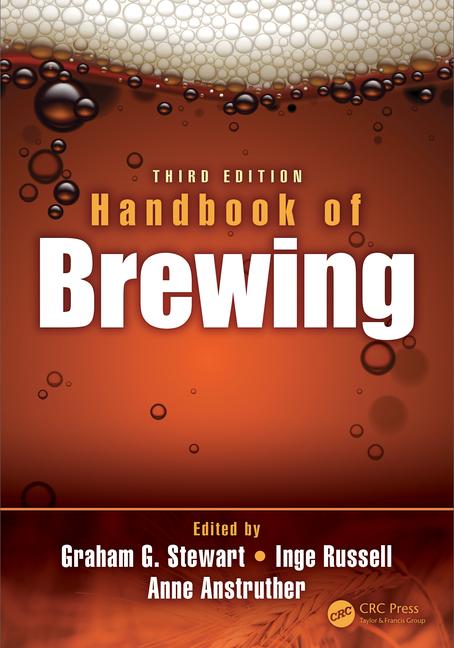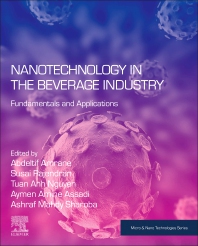Ingredient Spotlight: Hydrocolloids
Hydrocolloids offer multitude of beverage benefits
Ingredient appeals to beverage-makers looking to meet functional, sugar-reduction trends

Image courtesy of Getty Images
In the sport of cheerleading, the bases — while often looked over because they are not in the air — are a vital part of keeping a routine together. They must rely on each other to ensure that the stunts are executed correctly and safely, protecting the flyer at all times.
Similarly, hydrocolloids work to protect proteins and functional ingredients in beverages.
Vince Cavallini, beverage, dairy and convenience foods application manager at Cargill, Minnetonka, MN, describes how functional beverage trends are impacting the hydrocolloids market.
“Hydrocolloids play key roles in a wide range of beverages, including functional drinks,” he says. “Whenever formulators add protein or other functional ingredients to a beverage system, that’s when you’ll see hydrocolloids step up. They help suspend, stabilize and protect proteins and other functional ingredients.”
Cavallini adds that, although hydrocolloids do not provide specific health benefits, their functional attributes make many of the trendy, health-forward drinks possible.
Marshall Weston, senior principal scientist at Ingredion Inc., Westchester, IL, explains that it can be challenging to formulate products with new ingredients to achieve certain nutritional claims.
“While incorporating new ingredients into formulations, product developers often rely on the functionalities of hydrocolloids to provide a stable and appetizing product to make their brand stand out positively,” he says. “For example, when the keto diet entered the marketplace, product developers leaned on gum acacia to emulsify the high-fat content and prevent it from separating the end consumer.”
Zach Gall, global senior marketing manager for wholesome ingredients and texturants at ADM, Chicago, also notes that the demand for functional beverages from wellness-minded consumers has positively contributed to the hydrocolloids market.
“Hydrocolloids are important in these beverages because they play a multifaceted role in formulation, contributing to texture optimization, ingredient stability, clean label targets and customization based on application-specific requirements,” he explains.
Gall says that, for texture, ingredients like xanthan gum or guar gum can create a smooth, creamy consistency in beverages such as protein shakes and smoothies. In plant-based milk alternatives, Gall notes that hydrocolloids mimic the texture of dairy milk.
Like Cavallini, Gall shares that hydrocolloids deliver vital stabilization for ingredients in functional beverages.
“These drinks often contain sensitive components such as vitamins, antioxidants and microbiome-supporting solutions like probiotics,” Gall says. “Hydrocolloids act as stabilizers, preventing these ingredients from settling or separating. For example, pectin and gellan gum can stabilize and suspend fruit juice pulp in juice-based functional beverage, ensuring even distribution and maintaining visual appeal.”
He also states that hydrocolloid suppliers are collaborating with beverage manufacturers to offer customized solutions, addressing formulation challenges from various types of functional beverages.
“By leveraging the versatility and functionality of hydrocolloids, manufacturers can enhance product stability, optimize texture and ensure effective ingredient delivery, aligning with evolving consumer preferences and industry trends,” Gall expresses.
Tackling other trends
Aside from functional beverages, there’s no shortage of beverage trends influencing the use of hydrocolloids in beverages, including sugar reduction.
Cargill’s Cavallini shares that much of the work the company does with hydrocolloids in beverages centers on reduced- and no-sugar-added formulations. He says that, even when replacing sugar sweetness with a high-intensity sweetener, the mouthfeel and viscosity associated with a full-sugar drink must be replicated. Cavallini points to pectin.
“It adds viscosity and body, resulting in a more pleasing mouthfeel,” he says. “You’ll find pectin used in all kinds of reduced- and no-sugar-added beverages, including carbonates soft drinks (CSDs), teas, flavored waters, juice beverages and more.”
Cavallini notes that hydrocolloids are a common ingredient in many reduced-sugar dairy and plant-based dairy drinks because they help with suspension and syneresis prevention.
Dr. Brock Lundberg, chief science officer at River Falls, WI-based Fiberstar Inc., echoes similar sentiments regarding the use of hydrocolloids to replace body and texture in reduced-sugar beverages.
“Hydrocolloids typically don’t contribute a lot of sweetness to beverages,” he says. “At low concentrations, hydrocolloids make beverages taste and feel more natural and what consumers expect, even when sugar is reduced.”
ADM’s Gall shares comparable insights.
“Our research indicates that eight out of 10 U.S. adults are intentionally avoiding or reducing sugar in their diets, with 83% emphasizing the importance of sugar reduction in beverages,” Gall says. “Nevertheless, the endeavor to diminish sugar content poses challenges, impacting taste, sweetness and viscosity, thereby altering the overall sensory experience.”
He states that the company employs a comprehensive strategy aimed at sugar reduction called Replace Rebalance Rebuild, which combines ADM’s sweetening solutions portfolio and formulation expertise. The process replaces sweetness, rebalances flavor and rebuilds functionality, Gall notes.
“We leverage our diverse portfolio of sweetening solutions alongside our hydrocolloids to help manufacturers develop reduced-sugar beverages that cater to consumer preferences without sacrificing a satisfying sensory experience,” he adds.
As for other trends affecting hydrocolloids market, Gall feels that consumers are paying closer attention to beverage labels and opting for those with recognizable ingredients that they deem as “closer-to-nature.”
“It is also important to note that, because hydrocolloids are food ingredients, they must be listed on ingredient labels,” he says. “Given that, hydrocolloids derived from plant sources are gaining popularity. Additionally, hydrocolloid blends optimized for clean label formulations are being developed, providing formulators with versatile solutions that meet both performance and label transparency requirements.”
Cargill’s Cavallini echoes thoughts regarding label considerations.
“While many consumers are familiar with pectin, other hydrocolloids enjoy less name recognition,” Cavallini says. “Brands that prioritize ‘clean label’ formulation often try to use pectin, which is widely considered one of the most label-friendly hydrocolloids.”
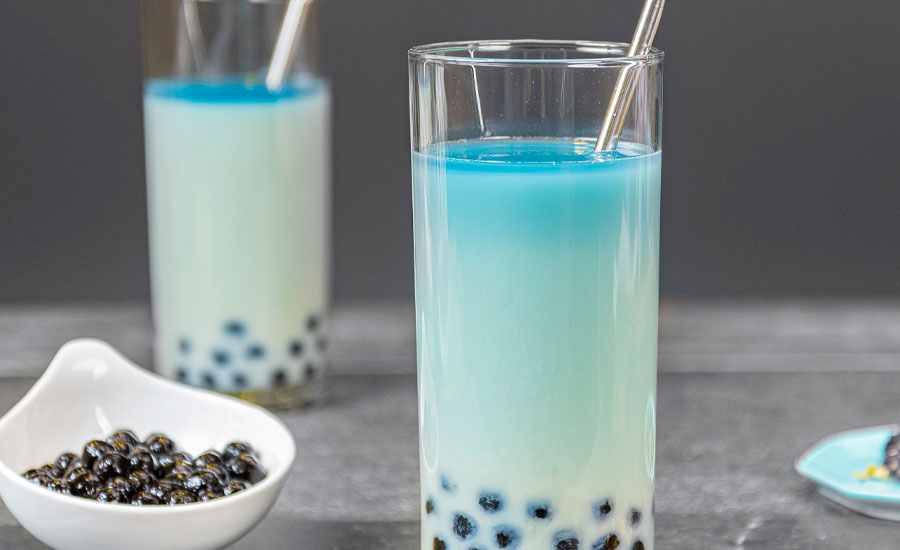
Considering hydrocolloid formulations
Beverage-makers must take various factors into consideration when working with hydrocolloids.
Cargill’s Cavallini says that one of the first steps is to understand formulation realities, especially pH levels.
“Some hydrocolloids perform best in acidic conditions, others are better-suited for neutral conditions,” he explains. “Processing considerations are another factor. Will the beverage be subjected to homogenization, high temperatures or other intense processing practices? These can all influence the hydrocolloid selection process.”
Ultimately, the specific challenges and solutions will vary depending on the type of beverage application, Cavallini shares.
“Sometimes, a single hydrocolloid will fill all the functional roles, but for more complex formulations, we might recommend a combination of hydrocolloids to provide the desired functionality, stability and sensory characteristics,” he adds.
Ingredion’s Weston’s echoes similar insights.
“Some hydrocolloids can work in different processing conditions, whereas others are somewhat limited,” Weston says. “Another item for product developers to consider is what functionality they are looking to gain from hydrocolloids. Not every beverage requires gums, but these ingredients are very functional and span a wide range of functionalities.”
He says hydrocolloids like gellan gum can suspend insoluble material with very little viscosity and mouthfeel, whereas others, such as guar gum, can build a lot of viscosity and mouthfeel with very low usage levels.
Fiberstar’s Lundberg shares that, aside from considering pH and processing levels, beverage-makers should consider flavor and oil levels, the amount of mineral or salts and how much viscosity is in the beverage. Like the other experts, he says what works for some formulations will not work for others.
Cargill’s Cavallini suggests that pectin is the most popular hydrocolloid in beverages due to its functionality and versatility.
“Brands appreciate its label-friendly nature, and it can be used across a wide variety of beverages,” he says.
Cavallini explains that pectin not only builds back mouthfeel and viscosity in beverages that are reduced sugar, but that it also can stabilize proteins. He says pectin can perform both tasks at once.
Ingredion’s Weston notes that many new product launches are leveraging the functionalities of acacia and gellan gum because of how they work in neutral pH beverages, adding that they do not contribute any significant amount of viscosity but provide suspension and emulsification.
“I lean on these versatile ingredients every day in many plant-based and dairy beverages, as we are seeing an uptick in plant-based beverage formulation,” he notes. “These ingredients can also be used interchangeable with dairy beverages.”
As for what is on the horizon for the hydrocolloids market, Cargill’s Cavallini notes that the ingredient already is responsible for much of the innovation happening on the beverage aisle. He suspects hydrocolloids will continue to fill their role as a suspender, stabilizer, replicator and protector in beverages.
“Up next, I’m watching for brands to use hydrocolloids to create beverages with novel viscosities and textures,” Cavallini says. “We’ve seen some of this with suspended gel beverages in the past, or more recently, bubble teas and their tapioca pearls. In the future, hydrocolloids may let us do even more to create beverages with fun, novel textures, suspended inclusions and more.”
Looking for a reprint of this article?
From high-res PDFs to custom plaques, order your copy today!




